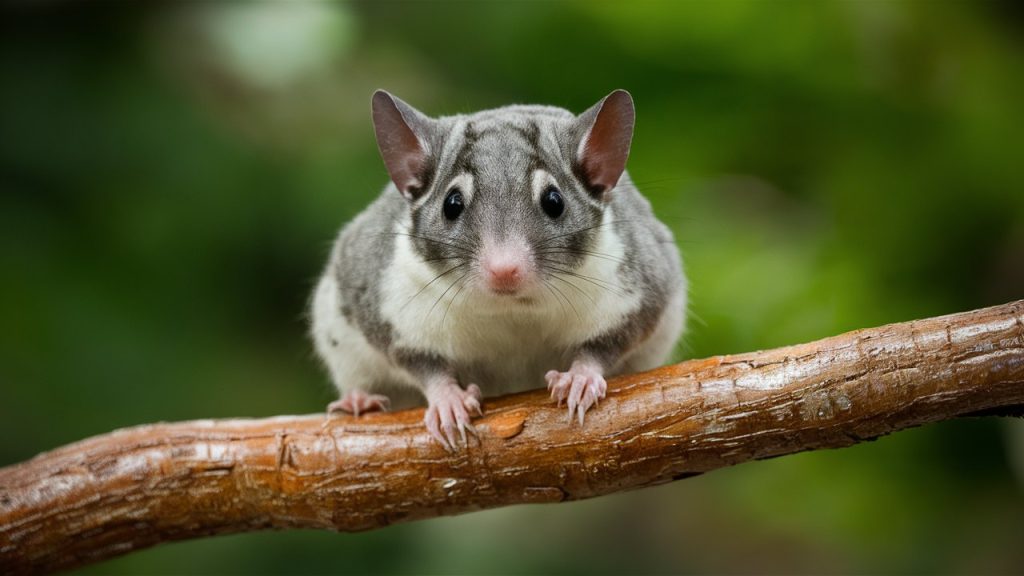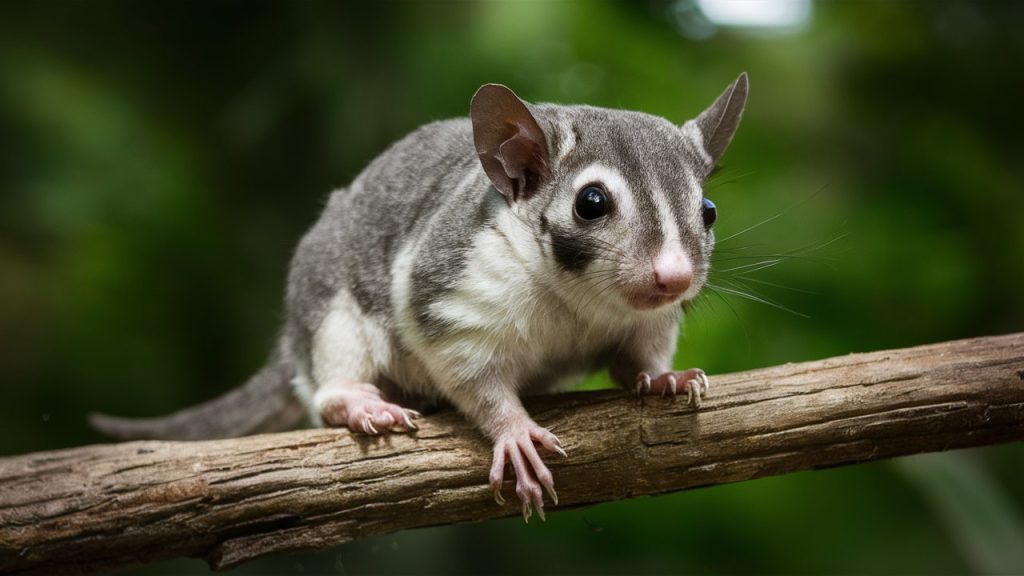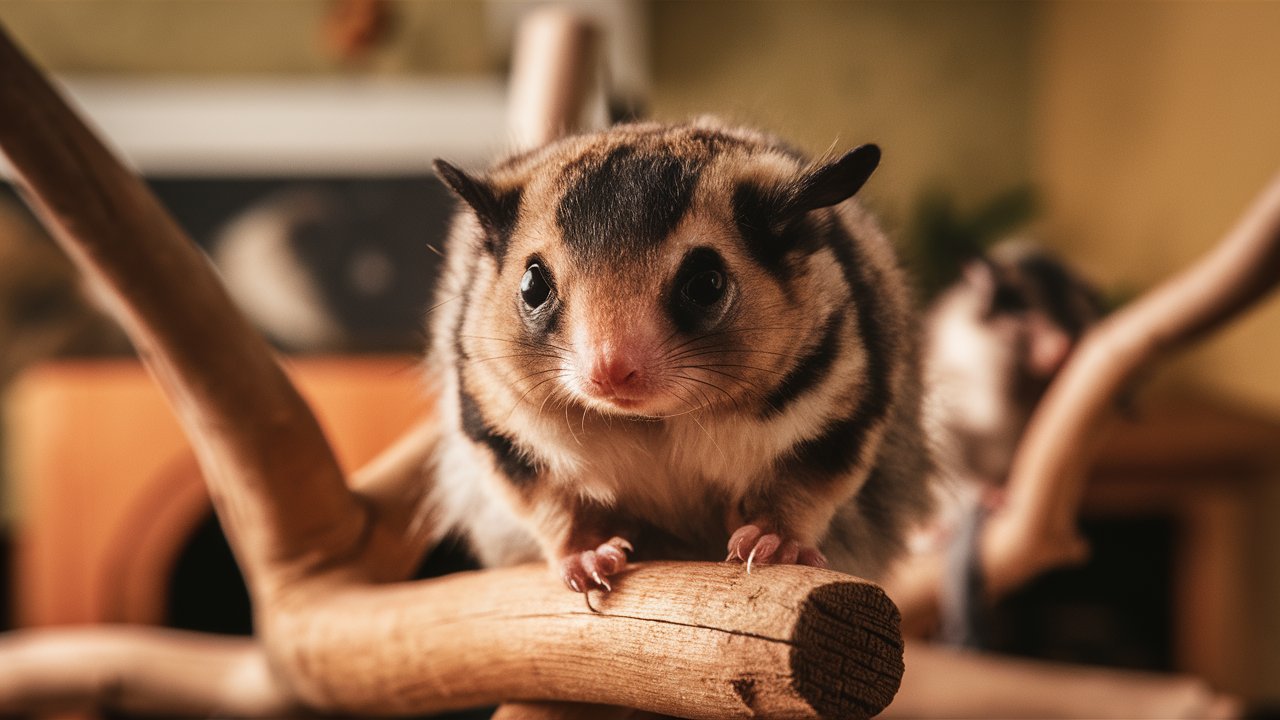Table of Contents
Is it possible to keep sugar gliders as pets? If you’re looking for a unique and affectionate companion, this question might cross your mind. Sugar gliders are tiny, adorable marsupials known for their playful nature and strong bonds with their owners. Can You Have a Sugar Glider as a Pet? But before welcoming one into your home, it’s essential to understand their needs and what it takes to care for them. In this article Can You Have a Sugar Glider as a Pet?, we’ll explore everything you need to know about having a sugar glider as a pet, ensuring you’re fully prepared to enjoy the joyful bond they can offer. Can You Have a Sugar Glider as a Pet?
What Is a Sugar Glider?

Small, nocturnal marsupials native to Australia, Indonesia, and New Guinea are called sugar gliders. They are named for their love of sweet foods and ability to glide through the air, much like flying squirrels. These tiny animals have large eyes, a bushy tail, and a soft, gray fur coat with a black stripe running down their back. Can You Have a Sugar Glider as a Pet? Sugar gliders are social creatures, often living in groups in the wild, which makes them crave companionship and attention when kept as pets.
Can You Have a Sugar Glider as a Pet?
Legal Considerations
Can You Have a Sugar Glider as a Pet? Before deciding to have a sugar glider as a pet, it’s critical to check the legal regulations in your area. In some states and countries, owning a sugar glider is illegal or requires a special permit. This is because they are exotic animals, and there are concerns about their impact on local ecosystems if they were to escape or be released. Do your research and obtain any necessary permits to comply with the law.
Space and Environment Needs
Sugar gliders may be small but require plenty of space to thrive. A large cage with ample room for climbing, gliding, and playing is essential. The cage should be tall rather than wide to accommodate their gliding behavior. Inside the cage, you’ll provide branches, ropes, and toys to keep them active and stimulated. A proper environment mimics their natural habitat and prevents boredom, which can lead to stress and behavioral issues.
Also read: What Is an International Style Building Requirements Material: Exciting Design & Materials
The Joyful Bond with a Sugar Glider
Building Trust and Bonding
One of the most rewarding aspects of having a sugar glider as a pet is the strong bond you can develop with them. However, building trust takes time and patience. When you first bring a sugar glider home, they may be shy or nervous. Spending time with them daily, offering treats, and speaking softly can help them get used to your presence. Over time, they’ll start you as their caregiver and develop a deep attachment.
Social Interaction and Playtime
Sugar gliders are highly social animals that need interaction to stay happy. If you don’t have time to do with your sugar glider daily, consider getting a pair so they can keep each other company. Regular playtime outside of the cage is also essential for their well-being. This allows them to exercise, explore, and interact with you, strengthening your bond.
Diet and Nutrition for Sugar Gliders
What Do Sugar Gliders Eat?
Can You Have a Sugar Glider as a Pet? A balanced diet is crucial for the health of your sugar glider. They feed on various foods in the wild, including insects, nectar, fruit, and tree sap. As pets, their diet should include a mix of fresh fruits, vegetables, insects, and a specialized sugar glider diet available at pet stores. It’s essential to Avoid feeding them foods high in fat or sugar, as this can lead to obesity and other health issues.
Supplements and Hydration
In addition to their regular diet, sugar gliders may need supplements to ensure they get all the necessary nutrients. Calcium and vitamin D3 are essential to prevent health problems like metabolic bone disease. Always provide fresh water in a shallow dish or bottle, and ensure they stay hydrated, especially in warmer climates.
Health and Care for Sugar Gliders
Common Health Issues
Can You Have a Sugar Glider as a Pet? Sugar gliders are generally hardy pets but can be prone to specific health issues. Some common problems include obesity, dental issues, and stress-related illnesses. Regular vet check-ups are essential to catch any potential problems early. It’s also important to closely monitor their diet and environment to keep them healthy.
Grooming and Maintenance
Sugar gliders are relatively low-maintenance when it comes to grooming. They groom themselves regularly, so you won’t need to bathe won’t. However, keeping their cage clean and waste-free is essential to prevent infections. Trim their nails regularly to avoid scratches, but be careful not to cut too close to the quick, as this can cause bleeding.
The Commitment of Owning a Sugar Glider

Time and Attention
Can You Have a Sugar Glider as a Pet? Owning a sugar glider is a long-term commitment that requires time and attention. They can live up to 15 years in captivity, so you need to be prepared for a long-term relationship. Unlike some pets that are content with minimal interaction, sugar gliders need daily attention and care. They thrive in a routine; consistency is crucial in keeping them happy.
Financial Considerations
In addition to time, owning a sugar glider can be a financial commitment. You’ll need a proper cage, food, toys, and regular vet visits. While they are small, their needs can add up over time. It’s important to consider whether you’re ready for your financial responsibility before bringing a sugar glider into your home.
Is it possible to keep sugar gliders as pets? Yes, but it’s not a choice that should be made hastily. Sugar gliders require a dedicated owner willing to invest time, effort, and resources into their care. In return, they offer a joyful bond and endless companionship that can be incredibly rewarding. Can You Have a Sugar Glider as a Pet? If you’re ready to meet your needs and build a lasting relationship, a sugar glider can be a delightful and loving addition to your family.

